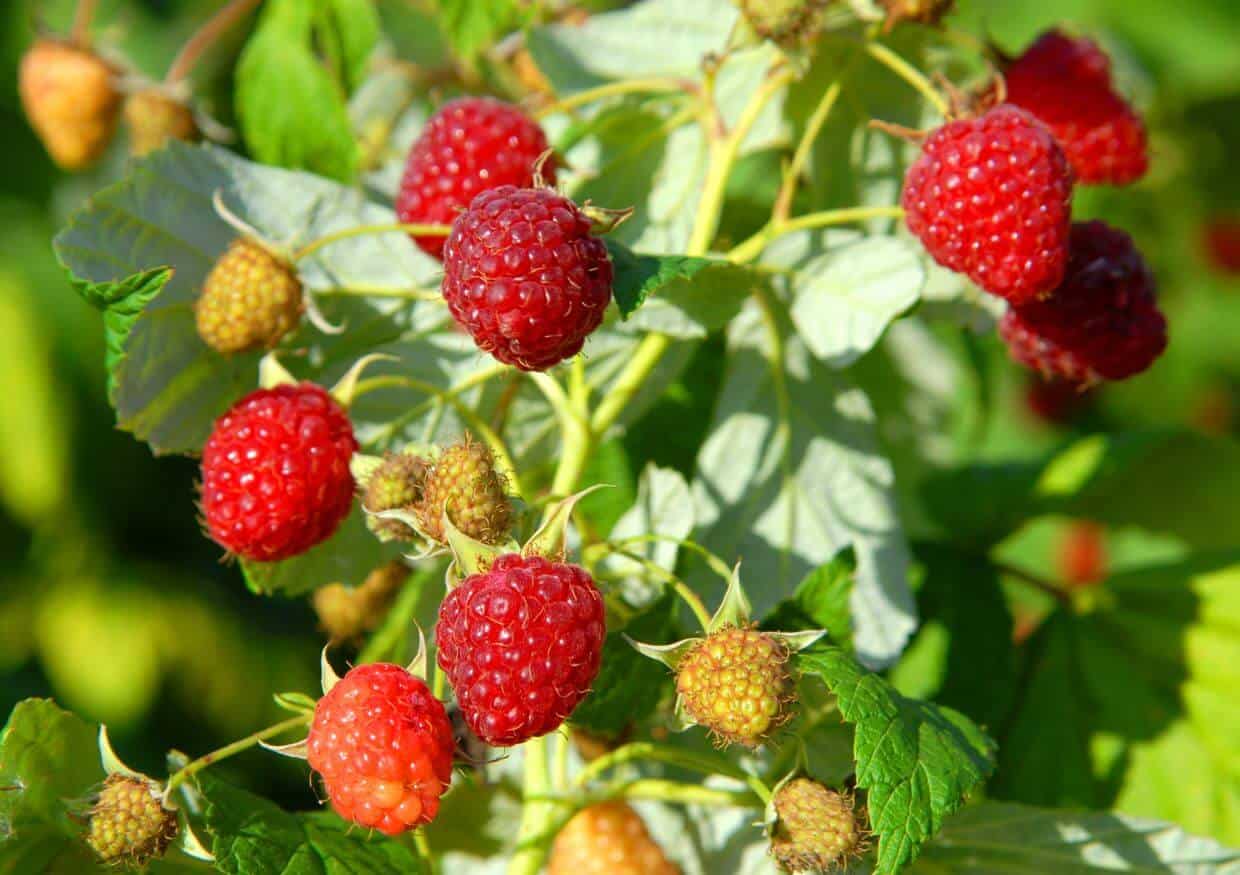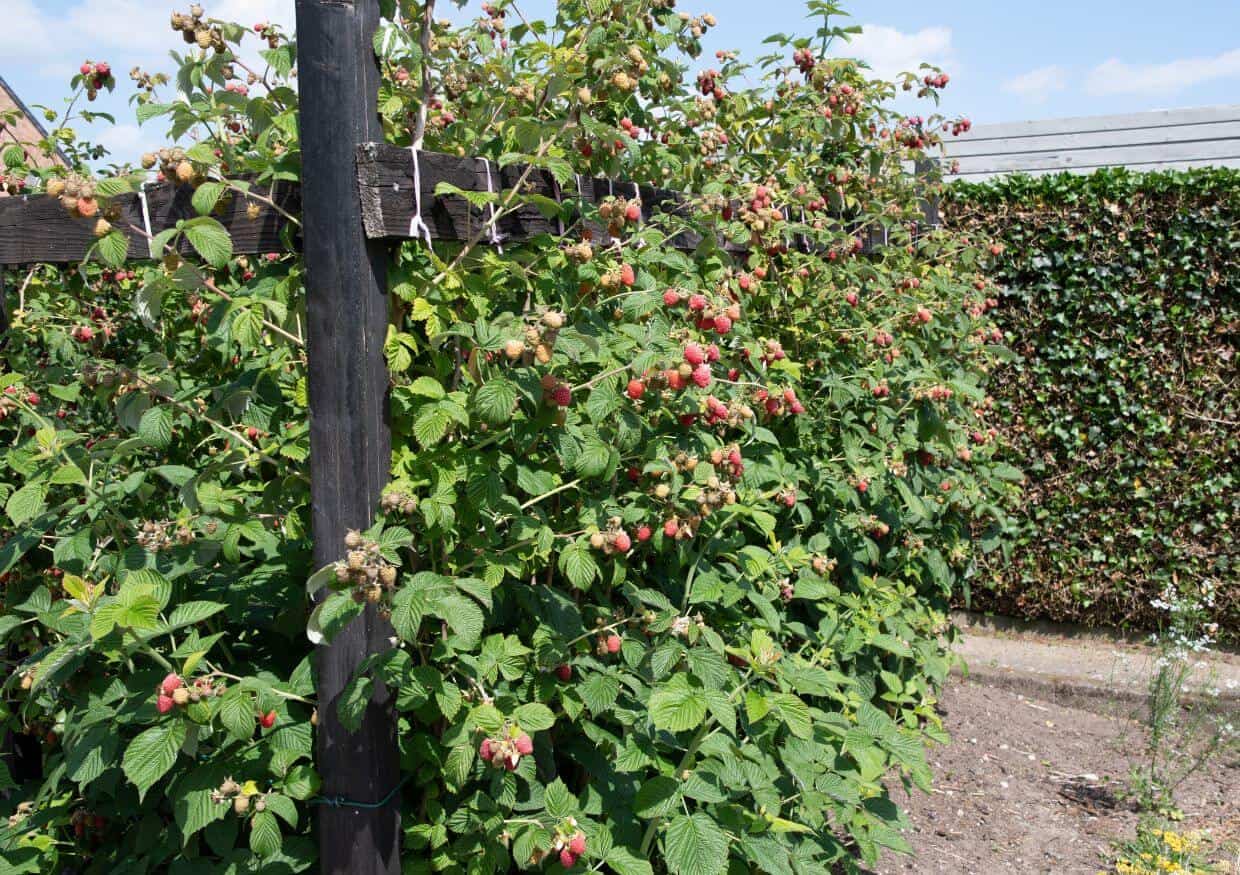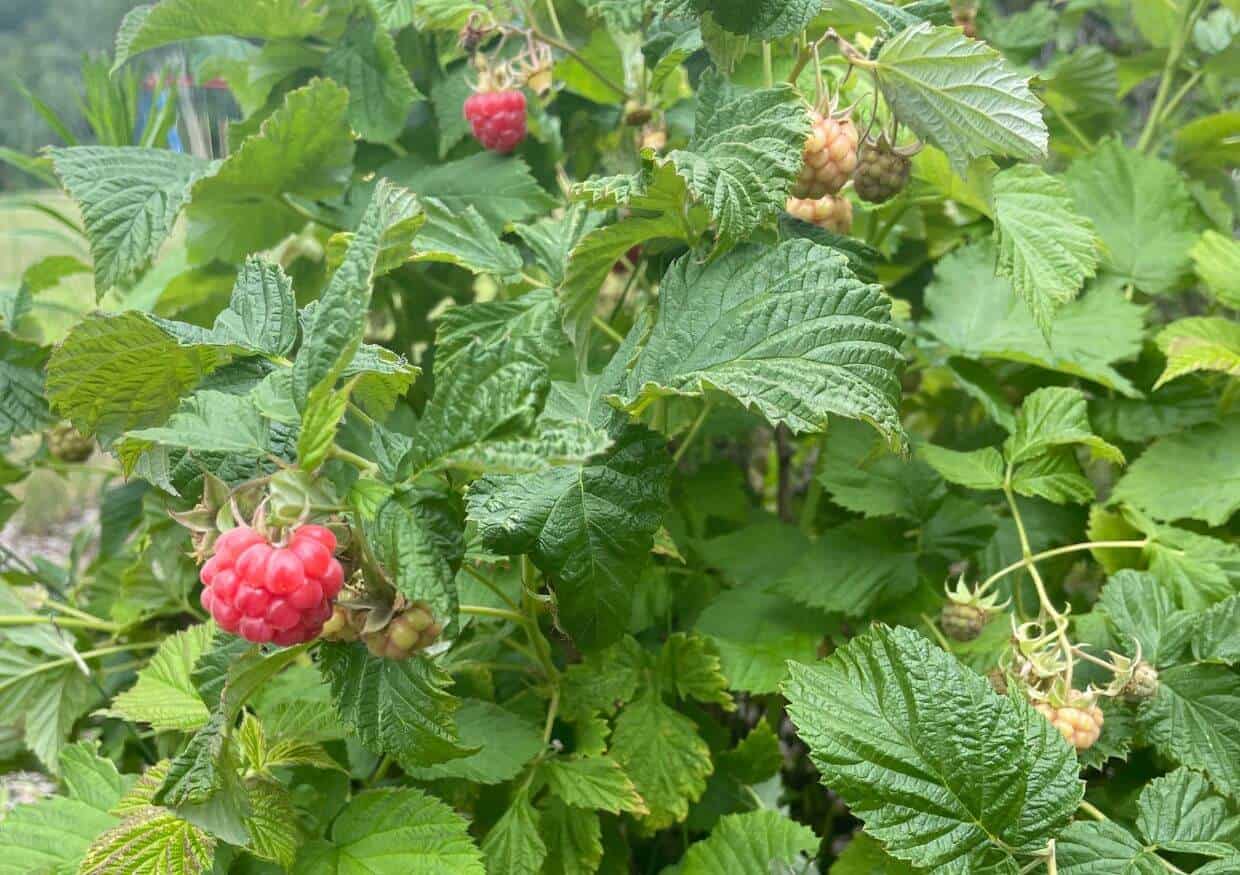Are you ready to transform your garden into a vibrant haven of beauty and flavor? Look no further than raspberry bushes. These versatile plants are a favorite among home gardeners for a good reason. Not only do they offer an abundance of delicious fruit, but they also add a touch of natural elegance to any landscape.

From the luscious red berries of traditional bushes to the unique flavors of yellow and black raspberries, there’s plenty to explore. Whether you’re a first-time gardener or a seasoned pro, learning how to grow raspberry bushes is an exciting adventure that promises fruitful rewards.
Understanding the basics is essential. Each step contributes to their successful growth, from choosing between everbearing or summer-bearing varieties to planting bare roots carefully. Your raspberry bushes will thrive with proper attention to new growth, root ball formation and wire support for taller varieties.
So why wait? Come dive into the world of raspberry bush cultivation and unlock the secrets behind creating a flourishing berry patch bursting with nature’s sweetest treasures. Get ready for an enriching journey as you explore the ins and outs of growing these delectable fruits.
Choosing the right varieties
There are various options to consider for your home garden. Picking the right raspberry varieties from different types and flavors can enhance your gardening project. Here are some factors to keep in mind when selecting raspberry plants:
- Explore different raspberry varieties suitable for home gardens:
- Red raspberries: These classic berries are famous for their sweet-tart flavor and vibrant color. They are commonly used in recipes such as pavlova nests and cheesecake in jars.
- Yellow raspberries: With a milder taste and unique hue, yellow raspberries offer a delightful twist. They are perfect in sorbets and jams.
- Purple raspberries: Known for their rich flavor profile, purple raspberries can be a delicious addition to your garden. They are perfect for topping a soufflé cheesecake.
- Understand the factors to consider when selecting raspberry plants:
- Climate suitability: Ensure that your raspberry variety is compatible with your local climate conditions.
- Disease resistance: Look for varieties with good resistance against common diseases in your area.
- Growth habit: Consider whether you prefer an upright or trailing variety based on available space and desired maintenance level.
- Climate suitability: Ensure that your raspberry variety is compatible with your local climate conditions.
- Learn about the characteristics and flavors of various raspberry varieties:
- Flavor profiles range from sweet to tangy, allowing you to select a variety that suits your taste preferences.
- Some varieties may have larger berries, while others offer smaller, more abundant fruit clusters.
- Flavor profiles range from sweet to tangy, allowing you to select a variety that suits your taste preferences.
You can find the perfect fit for your home garden by considering these factors and exploring different raspberry varieties. No matter which type you choose, raspberry bushes typically take around two years after planting before they start producing fruit. So patience is key.

Raspberries come in many varieties, you might be surprised! Pick the best for your zone and water the bush well until it takes to the new space. After that, they tend to be pretty hardy and don’t need an extraordinary amount of water. However, do keep them contained with a bamboo support or in raised beds so they don’t take over your space.
— Jessica Haggard, Primal Edge Health
Planting and establishing raspberry patches
Planting raspberries can be a rewarding experience that adds a delicious touch to your garden. With the proper knowledge, you can grow raspberry bushes and enjoy a bountiful crop.
Here are some key steps to get started:
- Choosing the ideal location: Select a sunny spot in your garden for planting raspberry patches. Ensure the area has well-draining soil and is away from trees or other plants that may compete for nutrients. You can even grow raspberries in pots or containers in a vertical garden if they have enough space for their roots to spread out and receive adequate sunlight.
- Preparing the soil: Before planting, prepare the soil by removing any weeds or grass. Dig a planting hole deep enough to accommodate the roots of your raspberry plant.
- Spacing and planting: Space raspberry plants about two to three feet apart in rows, allowing ample room for growth and airflow. Place each plant into its designated hole, ensuring the roots are evenly spread out.
- Watering routine: After planting, thoroughly water your new raspberry plants to help them settle into their new environment. Throughout the growing season, ensure they receive about an inch of water weekly.
- Mulching for moisture retention: Apply a layer of mulch around your raspberry plants to retain moisture and suppress weed growth. This will also help regulate soil temperature during extreme weather conditions.
- Pest management: Watch for common pests that may affect your raspberry bushes, such as aphids or spider mites. Consider using organic pest control methods if necessary.
- Support systems: As your raspberry plants grow taller, provide support systems such as trellises or stakes to prevent them from bending or breaking under their weight.
- Harvesting time: Once your raspberry bushes start bearing fruit, harvest ripe berries regularly to encourage continuous production throughout the season.
Red raspberry bushes are very easy to grow. They do need a very sunny spot to become sweet. The big problem with raspberry bushes though is that they are very invasive and give underground shoots spreading quite far from the main plant. So it’s better to grow them in a somewhat contained area.
— Tamara, Thriving In Parenting

Essential care tips for raspberry bushes
To maintain healthy raspberry plants, it is crucial to understand how to care for them and manage the environment they are growing in.
Soil pH and fertilization
Check the soil pH level regularly to ensure it falls within the optimal range of 5.5 to 6.5 for raspberries.
Provide proper nutrition by fertilizing your raspberry bushes annually in early spring or late winter before new growth begins. Use a balanced fertilizer with equal amounts of nitrogen, phosphorus and potassium.
Protecting raspberries from weeds
Preventing weed growth around your raspberry bushes is essential for their health and productivity because weeds compete for nutrients.
Consider implementing one of the following weed control methods:
- Mulching: Apply a layer of organic mulch around the base of the plants to inhibit weed growth and conserve moisture.
- Hand weeding: Regularly inspect your raspberry patch and remove any weeds by hand, ensuring you pull them out from the roots.
- Herbicides: If necessary, use herbicides safe for raspberry bushes while being cautious not to damage the plants.
Effective watering techniques
Ensure your raspberries receive adequate water during dry spells, especially when establishing new canes or producing fruit. Water deeply, but avoid overwatering as excessive moisture can lead to root rot.
Disease prevention
The following will help prevent diseases such as powdery mildew and root rot:
- Prune out infected canes promptly.
- Maintain good air circulation by spacing plants adequately.
- Avoid overhead watering that keeps foliage wet for extended periods.

Pruning techniques
Annual pruning is essential for maintaining healthy raspberry plants and promoting optimal fruit production. Understanding when and how to prune different raspberry canes will maximize fruit production.
Primocanes, or new primocanes, are the first-year canes that produce fruit in the second year. Pruning primocanes involves cutting them back to encourage lateral branching and more fruit production.
Floricane-bearing raspberries produce fruit on two-year-old canes called floricanes. Prune floricanes by removing the old, spent canes after they have borne fruit.
Training methods such as trellising or staking help maximize sunlight exposure and airflow among the plants. Trellising can prevent canes from drooping under the weight of heavy fruit clusters.
Regularly remove any dead or diseased canes to prevent the spread of infections. Keep an eye out for young stems known as suckers that grow from the base of raspberry bushes. These should be promptly removed to avoid overcrowding and competition for nutrients.
By mastering pruning techniques tailored to different types of raspberry canes, you can ensure optimal growth, health and a maximum yield of delicious raspberries.
Identifying and managing pests and diseases
Raspberry bushes can be susceptible to various pests and diseases that hinder their growth and productivity. By recognizing these common issues, you can take adequate measures to manage them without resorting to harmful chemicals.
Spider mites and beetles are among the most prevalent pests that target raspberry plants. Japanese beetles, in particular, can cause significant damage by feeding on the leaves. These pests often leave behind visible signs such as chewed foliage or webbing.
Regularly inspect your raspberry bushes for signs of infestation and consider using natural predators like ladybugs or lacewings to control pest populations.
Adding physical barriers or traps is another strategy to prevent pests from reaching your plants. You can also try using organic insecticides or companion planting with pest-repellent plants.
Familiarize yourself with symptoms of diseases. Powdery mildew is a white powdery coating on leaves, stems and fruit. Cane blight causes wilting, discoloration and dieback of raspberry canes. Gray mold is another disease problem characterized by fuzzy gray growth on berries.
Remember that early detection is crucial for successful management. With proper identification and appropriate preventive measures, you can ensure the health and vitality of your raspberry plants throughout the growing season.

Enjoy the fruits of your garden
By following the guidelines in this article, you are well on your way to enjoying a bountiful harvest of delicious raspberries from your garden.
Choose the right raspberry varieties and remember to provide essential care such as regular watering, mulching, pruning and fertilizing.
Stay vigilant in identifying common issues such as aphids or fungal infections. Implement appropriate management strategies to minimize damage and protect your crop.
Now that you have gained valuable knowledge about growing raspberry bushes, it’s time to implement it. Get started on creating a vibrant raspberry patch in your garden today and you’ll be well on your way to savoring the rewards of your efforts.